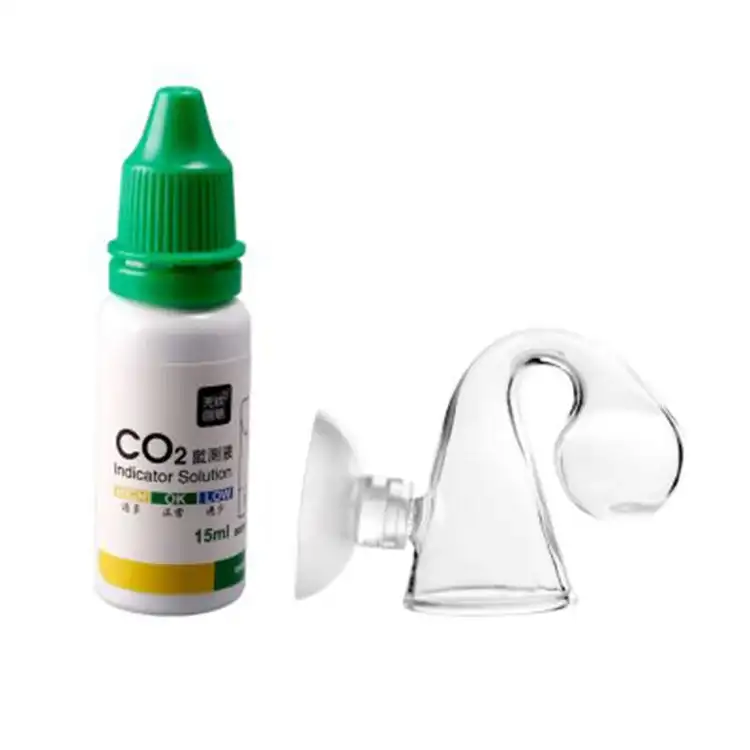How to Install a CO2 System
- The regulator (B) screws onto the CO2 cylinder (A).
- Optional manifold block add-ons can be added to the regulator (B).
- The bubble counter (C) on the regulator is filled with liquid, and airline tubing is attached to the lid of the bubble counter.
- The airline tubing connects to the diffuser (D), which is placed at the bottom of the aquarium.
- The optional check valve (E) is installed in line with the airline tubing near the aquarium rim.
- The regulator’s solenoid valve cable (F) is connected to the power adapter (G).
- The power adapter (G) plugs into the electrical outlet timer (H), which plugs into a wall outlet or power strip.
Is it bad if the CO2 bubbles from the diffuser are reaching the water surface?
No, this is normal. The key is to place your diffuser as low as possible in the aquarium. When the bubbles are released from the diffuser, they imperceptibly get smaller and smaller as they rise and the CO2 gas is being absorbed into the water.
How Much CO2 to Dose
In the manual, we recommend tuning the regulator to approximately 1 bubble per second (i.e., the rate of CO2 bubbles flowing through the bubble counter) because we would rather start with a lighter amount of CO2 to keep the fish safe. That being said, CO2 dosing amounts are different for every tank, and the bubble rate is not a perfect form of measurement since each aquarium has different plant and fish stocking levels. Also, we personally do not use drop checkers to chase the “perfect” amount of 30 ppm of CO2, but instead we let nature and the plants tell us when they are happy.
When the plants photosynthesizing during the daytime, they consume carbon dioxide and produce oxygen (O2) and sugars as a byproduct. If the plants have enough light and carbon dioxide, they can produce so much oxygen that it saturates the water and you can visibly see small bubbles released from their leaves. In our warehouse, we dial the CO2 level on our plant-holding aquariums until we consistently see this “pearling” effect. Because plants are living things, it usually takes at least 24 hours after we adjust the CO2 to see any effect, so we like to wait three days before making the next change to the system.

When should I turn on and off the CO2 in my aquarium?
As mentioned before, plants use CO2 when there is light to photosynthesize. However, the process reverses at night and becomes the respiration cycle, in which plants consume oxygen and sugars and release CO2. Therefore, we want to shut off the CO2 regulator when the aquarium light is off. For more optimized CO2 usage, program the regulator’s timer to turn on 1–2 hours before the light comes on and turn off 1 hour before the light shuts off. (If you only have one timer, you can use the same timer with a power strip so that the light and regulator turn on and off at the same time.)
Is CO2 dangerous for aquarium fish?
It can be harmful for animals in large enough quantities if (1) CO2 causes the water pH to drop too quickly or (2) people try to be so efficient with the CO2 that they end up cutting off the oxygen that fish need to breathe. In the latter case, some hobbyists try to minimize surface agitation so that less gas exchange occurs and less CO2 escapes the water. However, less gas exchange also means less oxygen will enter the water, which can cause your fish to struggle and gasp for air. Our recommendation is to increase both CO2 and O2 in the water by using an air stone (or other device that agitates the water surface) in conjunction with your pressurized CO2 system. Yes, you may have to increase your bubble rate a little to compensate for the slight loss of CO2, but having enough oxygen for your fish (and plants at night) is more important and can help lead to the pearling effect that is so desired by planted tank enthusiasts.
Best of luck with your new pressurized CO2 system and we hope you have fun exploring the world of high tech plants.
















Reviews
There are no reviews yet.